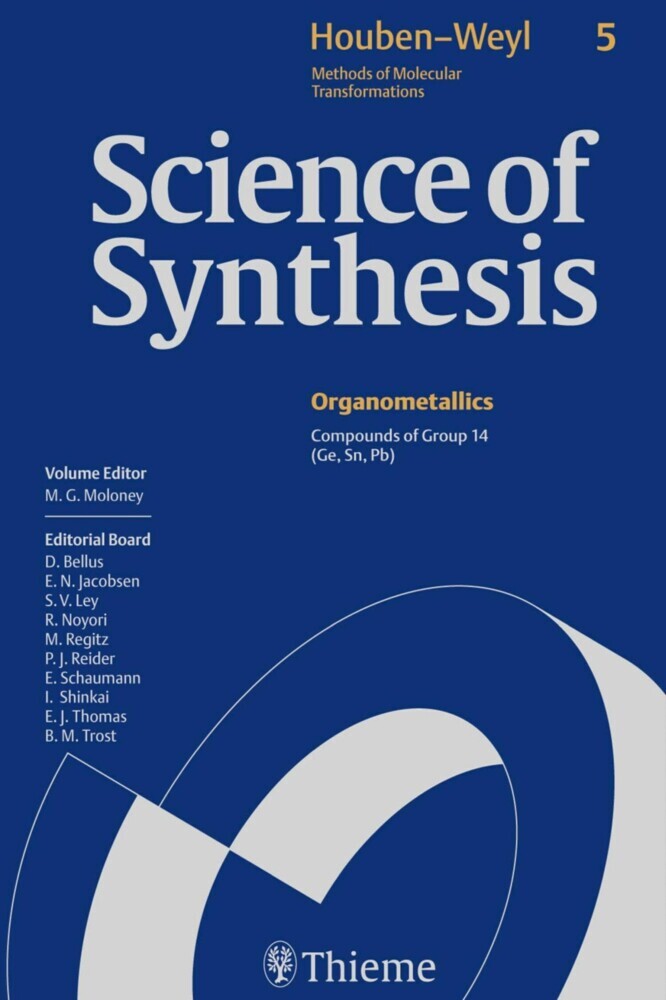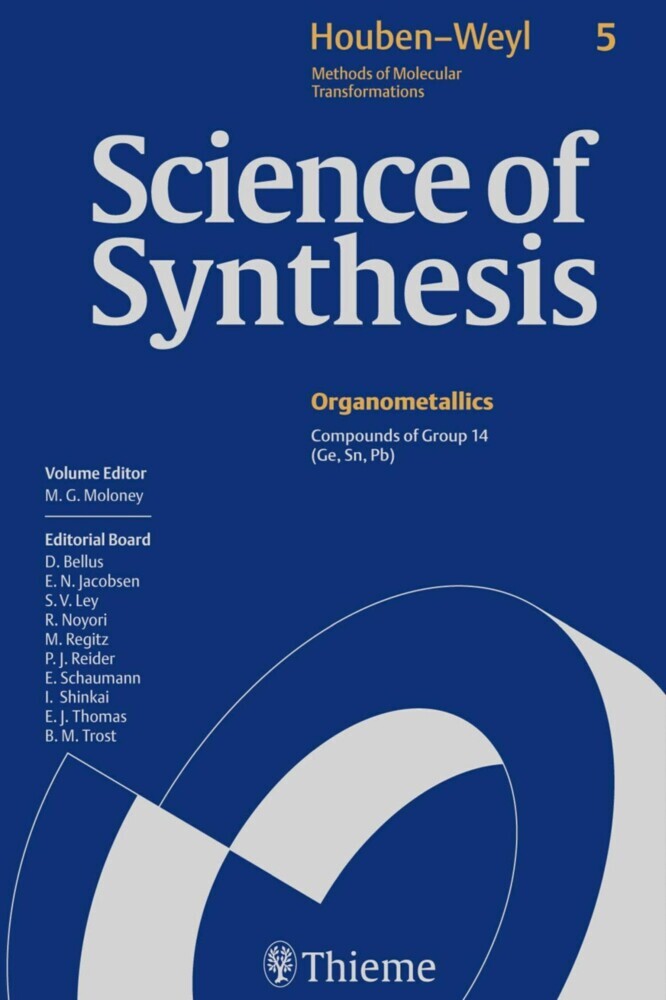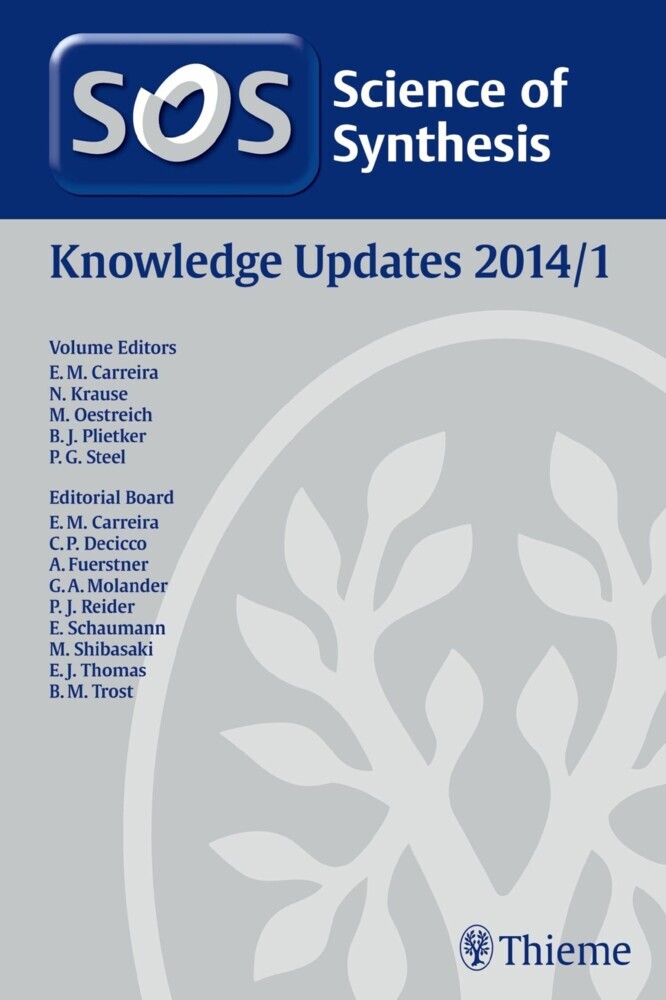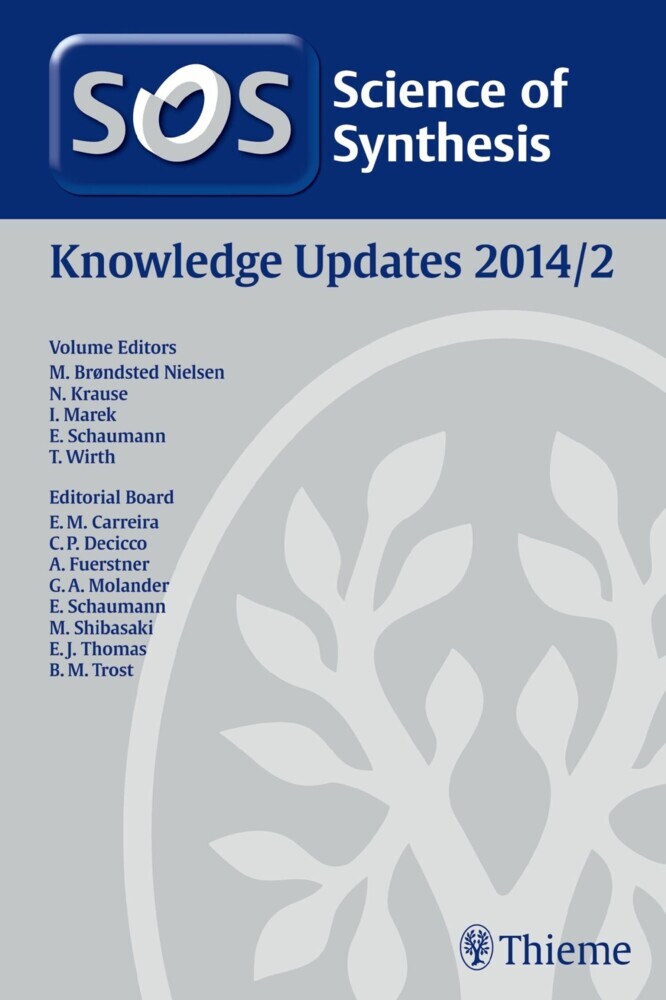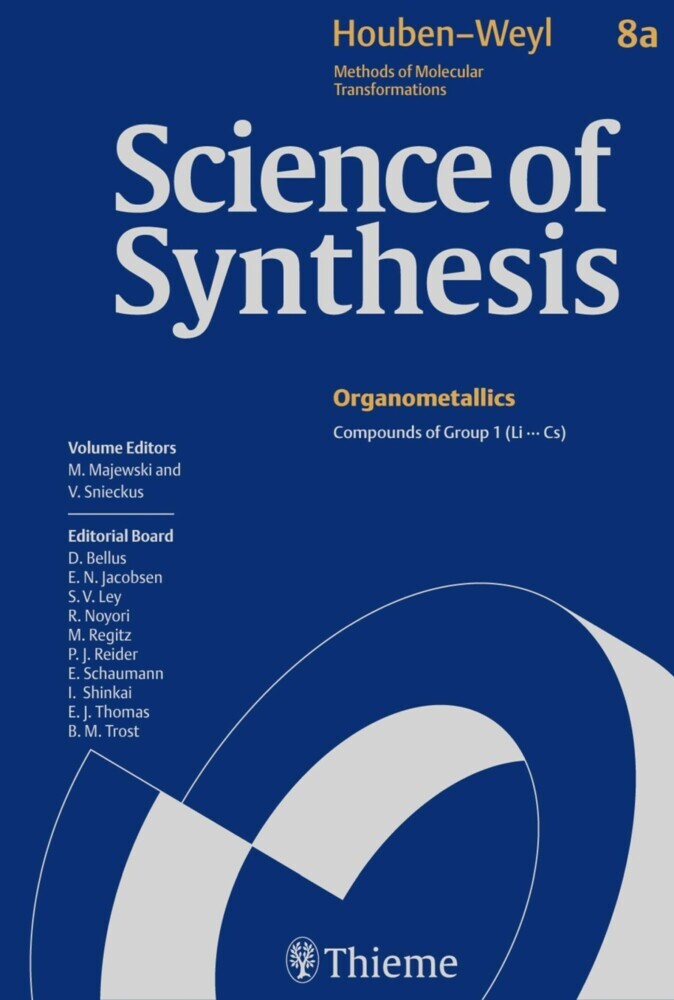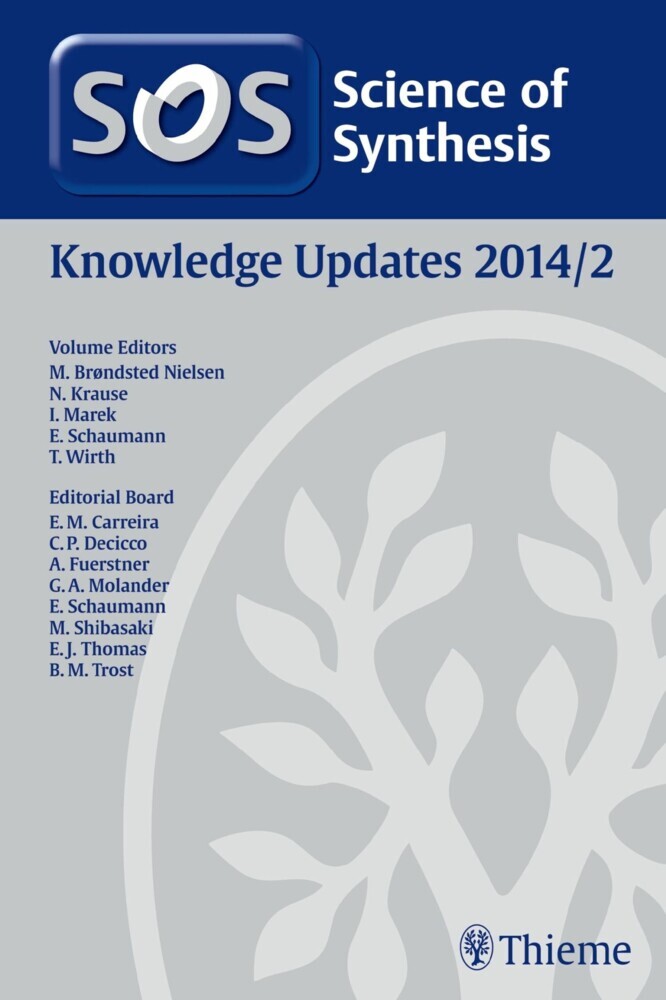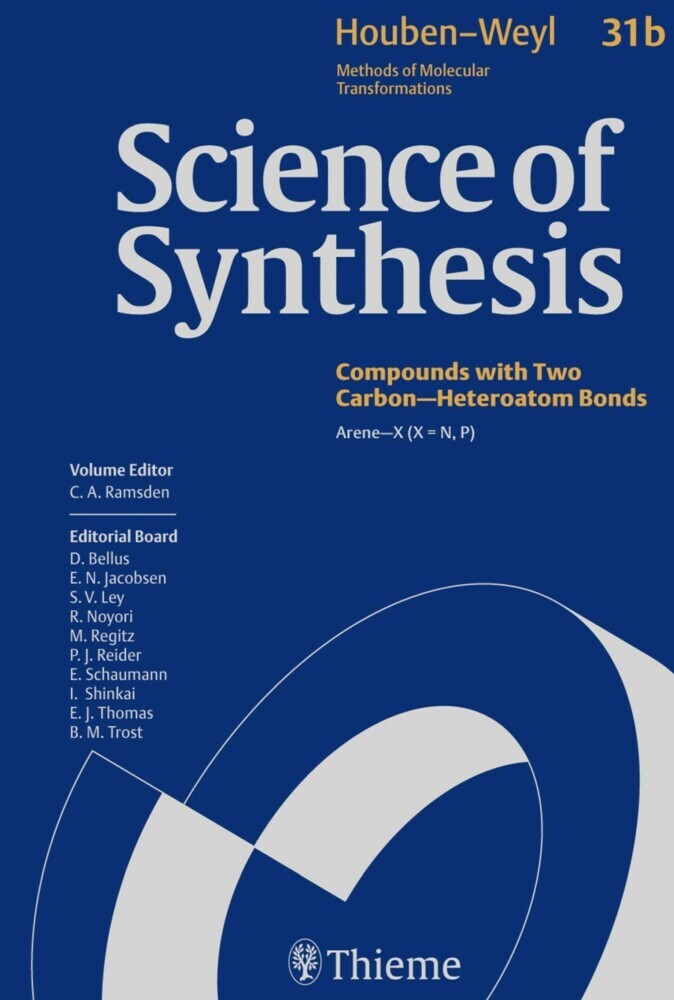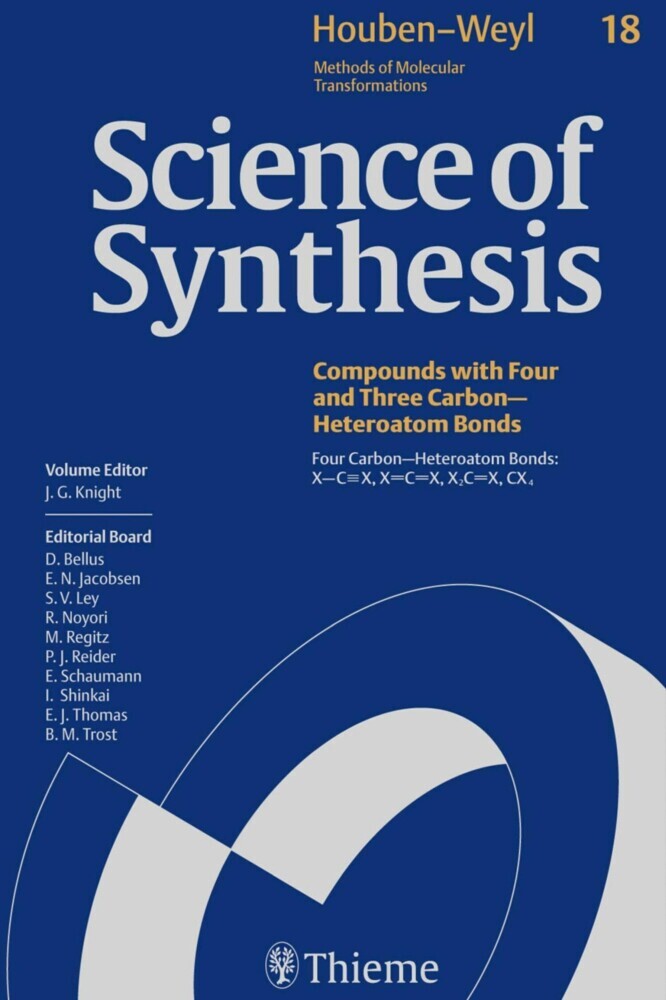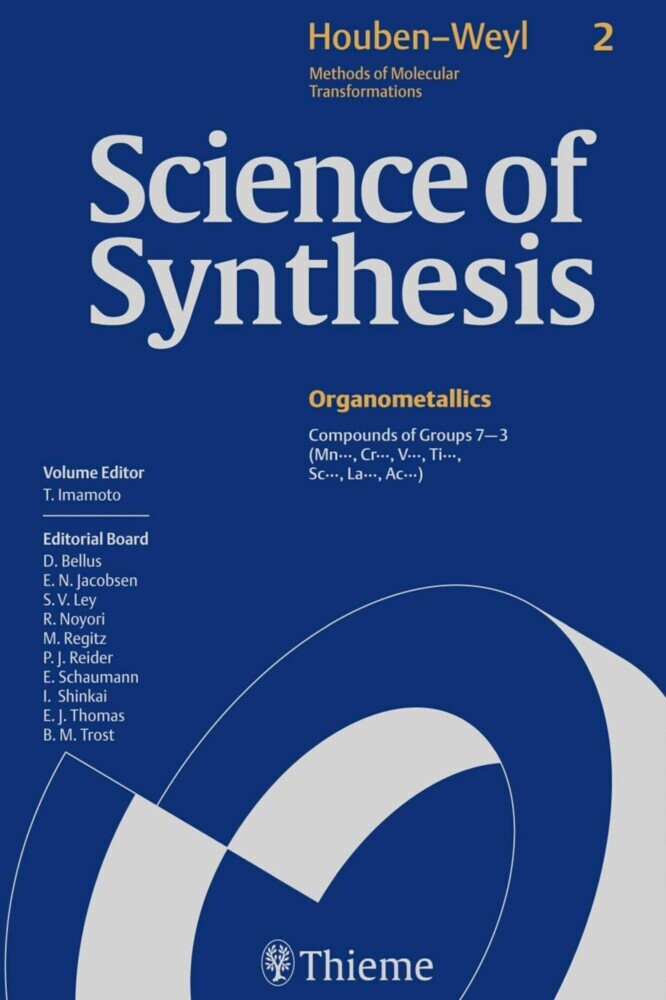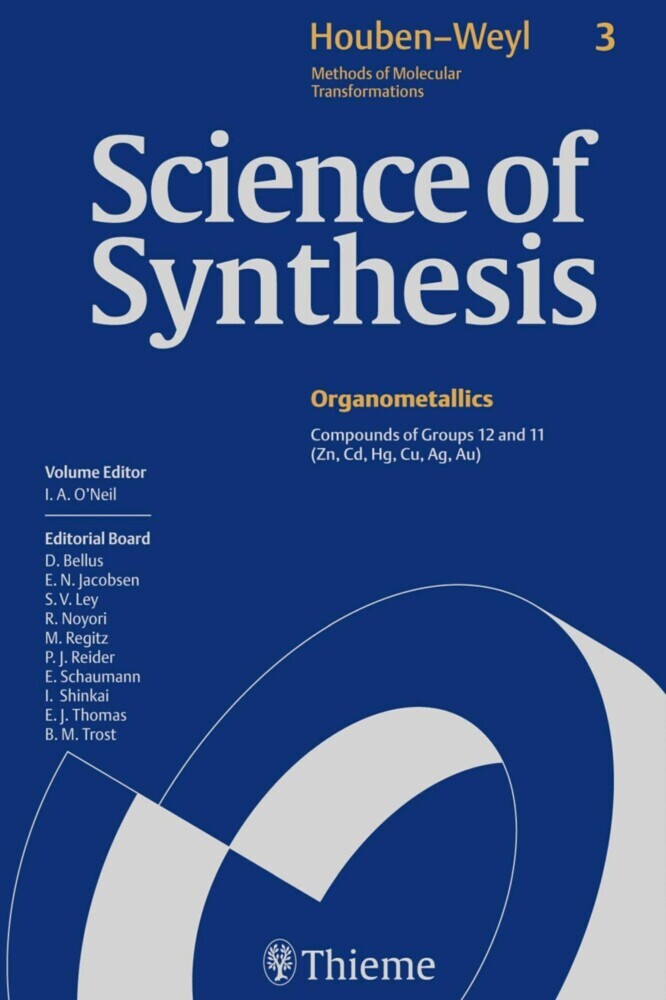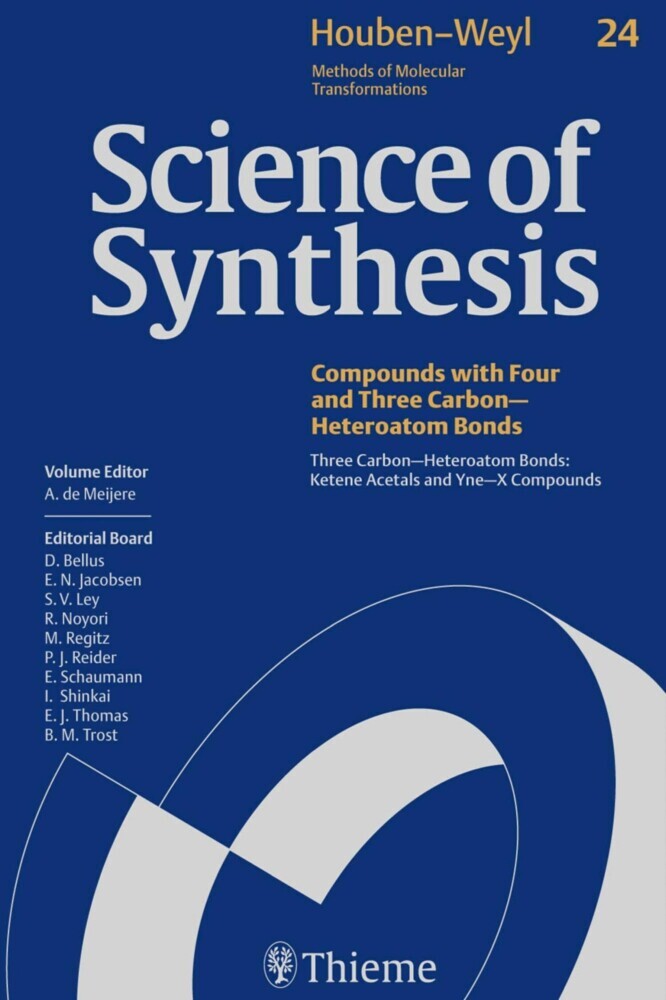Science of Synthesis: Houben-Weyl Methods of Molecular Transformations Vol. 5
Compounds of Group 14 (Ge, Sn, Pb)
Science of Synthesis: Houben-Weyl Methods of Molecular Transformations Vol. 5
Compounds of Group 14 (Ge, Sn, Pb)
Science of Synthesis: Houben-Weyl Methods of Molecular Transformations is the entirely new edition of the acclaimed reference series Houben-Weyl, the standard synthetic chemistry resource since 1909. This new edition is published in English and will comprise 48 volumes published between the years 2000 and 2008.
Science of Synthesis is a quality reference work developed by a highly esteemed editorial board to provide a comprehensive and critical selection of reliable organic and organometallic synthetic methods. This unique resource is designed to be the first point of reference when searching for a synthesis strategy.
- Contains the expertise of presently 400 leading chemists worldwide
- Critically evaluates the preparative applicability and significance of the synthetic methods
- Discusses relevant background information and provides detailed experimental procedures
For full information on the Science of Synthesis series, visit the Science of Synthesis Homepage
1;Science of Synthesis - Volume 5: Compounds of Group 14 (Ge, Sn, Pb);1 1.1;Title page;3 1.2;Imprint;5 1.3;Preface;6 1.4;Overview;8 1.5;Table of Contents;14 1.6;Introduction;48 1.7;5.1 Product Class 1: Germanium Compounds;50 1.7.1;5.1.1 Product Subclass 1: Germanium Hydrides;56 1.7.1.1;Synthesis of Product Subclass 1;56 1.7.1.1.1;5.1.1.1 Method 1: By Reactions of (Organogermyl)alkali Metal Compounds;56 1.7.1.1.1.1;5.1.1.1.1 Variation 1: From Tetraarylgermanes;56 1.7.1.1.1.2;5.1.1.1.2 Variation 2: From Digermanium Compounds;57 1.7.1.1.1.3;5.1.1.1.3 Variation 3: From Trialkyl- and Triarylgermanium Halides;59 1.7.1.1.2;5.1.1.2 Method 2: Reduction of Germanium Halides;60 1.7.1.1.2.1;5.1.1.2.1 Variation 1: Reduction with Lithium Aluminum Hydride;60 1.7.1.1.2.2;5.1.1.2.2 Variation 2: Reduction with Group 14 Hydrides;63 1.7.1.1.2.3;5.1.1.2.3 Variation 3: Substitution of Halogen with a Carbanion;63 1.7.1.1.3;5.1.1.3 Method 3: Substitution of Halo(organo)germanium Hydrides;64 1.7.1.1.3.1;5.1.1.3.1 Variation 1: Halogenation of Alkyl- and Arylgermanium Hydrides (Substitution of Hydrogen by Halogen);65 1.7.1.1.3.2;5.1.1.3.2 Variation 2: Substitution of Halogen in Halo(organo)germanium Hydrides;66 1.7.1.2;Applications of Product Subclass 1 in Organic Synthesis;67 1.7.1.2.1;5.1.1.4 Method 4: Reduction of Organic Halides;68 1.7.1.2.2;5.1.1.5 Method 5: Hydrogermylation of Carbon--Carbon Multiple Bonds;69 1.7.1.2.3;5.1.1.6 Method 6: Reduction of Carbonyl Compounds;70 1.7.1.2.4;5.1.1.7 Method 7: Action of Acids and Bases;71 1.7.2;5.1.2 Product Subclass 2: Digermenes and Digermanes;74 1.7.2.1;Synthesis of Product Subclass 2;75 1.7.2.1.1;5.1.2.1 Method 1: Digermenes from Germanium(II) Complexes;75 1.7.2.1.2;5.1.2.2 Method 2: Digermenes by Photolysis of Trigermiranes or Bis(silyl)germanes;76 1.7.2.1.3;5.1.2.3 Method 3: Digermenes by Reductive Coupling of Dihalogermanes;77 1.7.2.1.4;5.1.2.4 Method 4: Digermanes from Halogermanes;77 1.7.3;5.1.3 Product Subclass 3: Metalated Germanium Compounds;80 1.7.3.1;Synthesis of Product Subclass 3;81 1.7.3.1.1;5.1.3.1 Method 1: Reactions of Tetravalent Germanium Compounds with Metals;81 1.7.3.1.2;5.1.3.2 Method 2: Metathesis;81 1.7.3.1.3;5.1.3.3 Method 3: Oxidative Addition;82 1.7.3.1.4;5.1.3.4 Method 4: From Germylenes;82 1.7.4;5.1.4 Product Subclass 4: Germanium Oxides, Sulfides, Selenides, and Tellurides (Double Bonded);86 1.7.4.1;Synthesis of Product Subclass 4;87 1.7.4.1.1;5.1.4.1 Method 1: Chalcogenation of Germylenes;87 1.7.5;5.1.5 Product Subclass 5: Iminogermanes;90 1.7.5.1;Synthesis of Product Subclass 5;90 1.7.5.1.1;5.1.5.1 Method 1: From Germylenes;90 1.7.6;5.1.6 Product Subclass 6: Germenes;94 1.7.6.1;Synthesis of Product Subclass 6;94 1.7.6.1.1;5.1.6.1 Method 1: From Germylenes;94 1.7.7;5.1.7 Product Subclass 7: Germylenes;98 1.7.7.1;Synthesis of Product Subclass 7;98 1.7.7.1.1;5.1.7.1 Method 1: From Divalent Germanium Compounds with Organolithiums or Grignard Reagents;98 1.7.8;5.1.8 Product Subclass 8: Organogermanium Halides;102 1.7.8.1;Synthesis of Product Subclass 8;102 1.7.8.1.1;5.1.8.1 Method 1: From Germanium Halides by Substitution;102 1.7.8.1.2;5.1.8.2 Method 2: Methylene Insertion into the Germanium--Halogen Bond;105 1.7.8.1.3;5.1.8.3 Method 3: By Halogenation of Germanium Compounds;106 1.7.8.1.3.1;5.1.8.3.1 Variation 1: From Alkyl- or Arylgermanes;106 1.7.8.1.3.2;5.1.8.3.2 Variation 2: From Germyl Ethers;108 1.7.8.1.3.3;5.1.8.3.3 Variation 3: From Metallic Germanium;109 1.7.8.1.3.4;5.1.8.3.4 Variation 4: From Germanium Hydrides;110 1.7.8.1.4;5.1.8.4 Method 4: Comproportionation of Organogermanium Compounds and Germanium Halides;111 1.7.8.1.5;5.1.8.5 Method 5: Addition Reactions of Germanium Compounds;113 1.7.8.1.5.1;5.1.8.5.1 Variation 1: Addition of Germanium Hydrides to Unsaturated Compounds;113 1.7.8.1.5.2;5.1.8.5.2 Variation 2: Reactions of Germylenes;116 1.7.9;5.1.9 Product Subclass 9: Germanium Oxides;122 1.7.9.1;Synthesis of Product
| ISBN | 9783131717511 |
|---|---|
| Artikelnummer | 9783131717511 |
| Medientyp | E-Book - PDF |
| Copyrightjahr | 2014 |
| Verlag | Georg Thieme Verlag KG |
| Umfang | 864 Seiten |
| Sprache | Englisch |
| Kopierschutz | Digitales Wasserzeichen |

